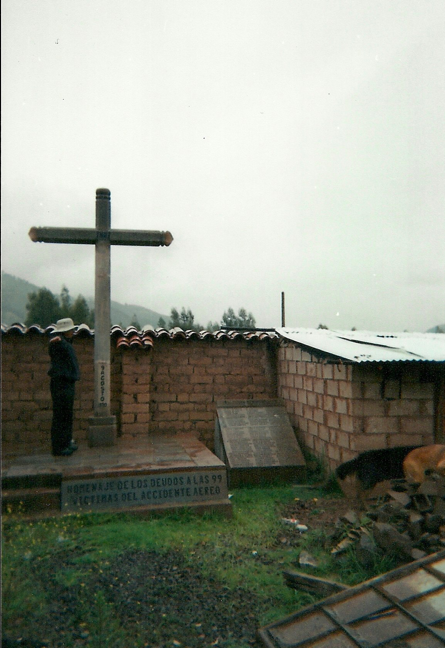I had always known about the LANSA flight 502 plane crash on August 9, 1970 that killed 99 of the 100 Peruvians and Americans on board. I had always known about the flight that killed Albert Sarfert III, an eighth grader from New Jersey who had been participating in a summer study abroad program in Peru. I had always known about the flight that killed my mom’s brother, but it was information that I never began to digest until I went to Peru myself and stumbled upon family history I had never expected to find.
It wasn’t until I realized I would be shipping off to Peru in a short while that I started to think about the event and have more frequent discussions about it with my mom. She showed me newspaper articles from the crash and pictures of a memorial site that was supposedly located on a mountainside near Cusco, Peru for the victims. Coincidence or fate or whatever you’d like to call it hit hard when I found out that our first portion of study was to take place in the Cusco district of San Jerónimo, the very district that the memorial was located. I knew no other specifics of its location, but it was enough to instill within me an incredible drive to find the memorial that no one in my family has seen and gain a deeper understanding of the event that instantly changed the lives of my mother and her family.Upon the first few days of arriving in Lima I asked one of our fantastic leaders, Jane, if she had heard of a memorial located in San Jerónimo. She hadn’t. Restless for answers, but not too discouraged, I waited a few days until we reached Cusco. During the first week of class we met Roberto, a local pastor who would occasionally lead class and join us on trips. During lunch Jane and I asked him if he was familiar with the memorial. He was. We followed Roberto to the roof of the school and he pointed to a spot in the distance. He told me that the memorial had once been located where he was pointing, but that he thought the land might have since been sold, therefore causing the memorial to be relocated. Nonetheless, he agreed to meet me at the school on Saturday morning in hopes of tracking it down.
After I “gracefully” explained the situation to my host family in Spanish, I hopped on a bus to the school. Upon Roberto’s arrival we began our rainy walk up the valley in the direction of his previously pointed finger. No more than 20 minutes later, Roberto stopped us as we passed his childhood house. He told us the crash site had been nearby, and though he was only 7 when it happened, he still remembers the day. It was at that point that it seemed Roberto’s memory had been tapped. He told many stories of the incident. About how two farmers had managed to pull the pilot out of the plane before it exploded. About how one of those farmers was killed and one is still living nearby. About how many people had collected expensive items that were scattered across the valley from the wealthy Americans and Limeños, but how they became frightened and returned them out of a powerful superstition. And about how one can still hear the ghost of a victim playing music at a nearby stream.
As we ascended, I carefully listened to Roberto’s words while also scouring the scenery, hoping to see a memorial, which may or may not still exist. But soon enough, there it was, in the backyard of an adobe house on a steep and muddy road. The tall stone cross, the wide base and the large plaque containing the names of the 99 victims. What had once been located on an isolated mountainside had now become consumed by expansion—a strange playground for the children and chickens, which now live around it.
As I neared the memorial, I noticed an ironic bird lying dead at the bottom of the cross. And to the right, among the other names, was my uncle’s–though subtly misspelled–permanently engraved as it is in the hearts of my family.
I took as many photos as I could justify taking on a disposable camera, greatly expressed my gratitude to Roberto, consumed a filling and affordable meal at a local menú, and headed back to my temporary home.
Once I returned, my hosts warmly greeted me and took me to their chacra where we picked alfalfa and talked about everything my limited vocabulary allowed. As the sun went down we retired inside the pink earthen walls of the house, sipping soup as my host brothers stared at me in admiration and my host parents taught me names of body parts in Quechua—their native tongue. Far away from home in an unfamiliar land, I had a new appreciation for history and a strange new sense of family.
My grandfather died about a month after I came home from SST with the comfort of knowing loved ones do return from Peru. And though death is permanent, pain need not be.


